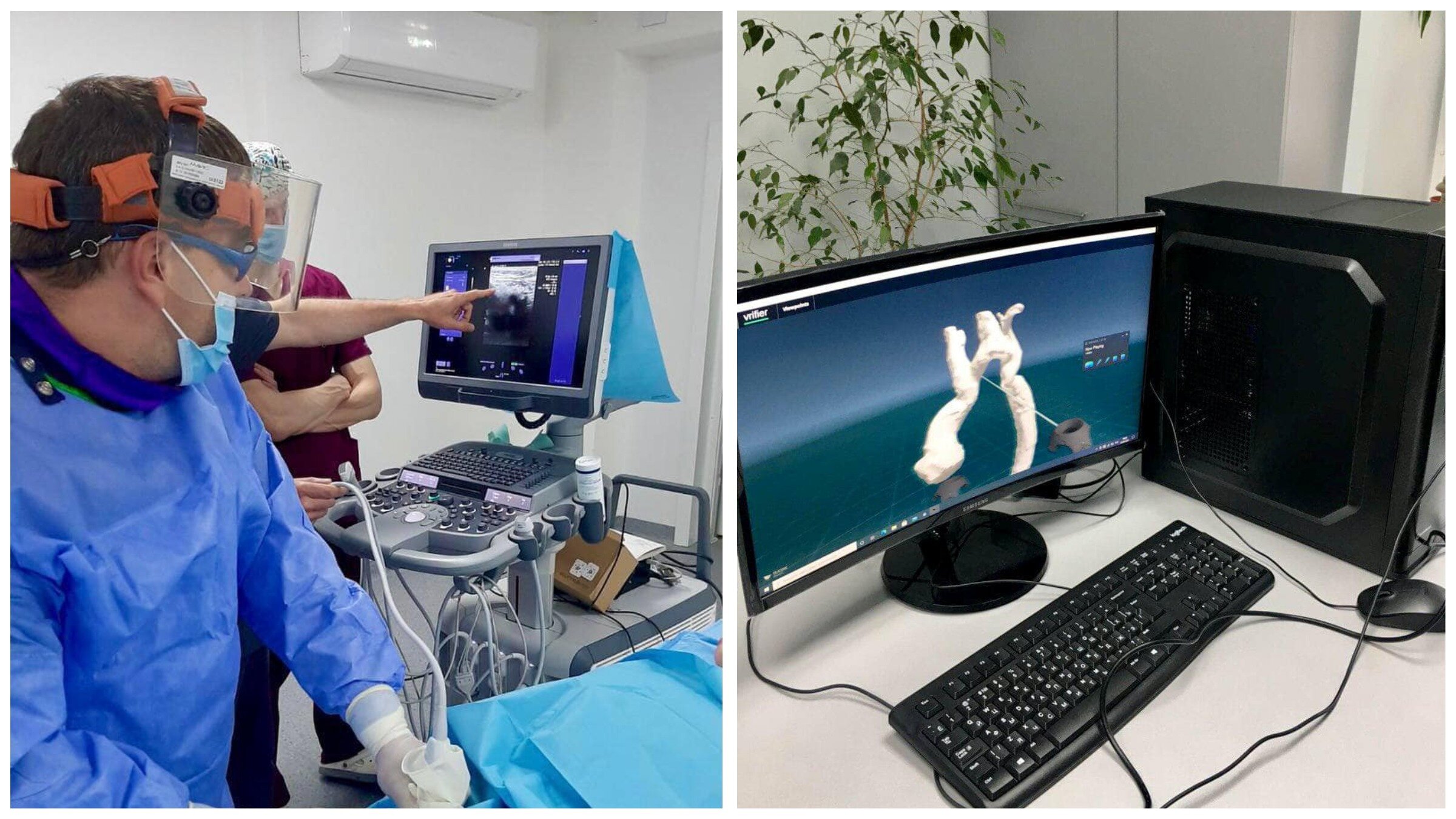Emergency room doctors in Lviv used virtual reality (VR) to save a 12-year-old girl with a congenital heart defect. It was the first time Ukrainian doctors used VR to perform a surgery, they said on June 9.
Surgeons discovered that the patient’s aorta was narrower than usual, blocking normal blood flow to the body. As a result, her blood pressure was 160/180 mmHg, compared to the normal blood pressure of 120/80 mmHg.
In order to choose the most effective and least traumatic method of treatment, surgeons used VR technology to reconstruct the patient’s aorta and its branches. Doctors then treated her heart defect by inserting an artificial tube, known as stint, into her aorta to keep it open. Soon after the surgery, the girl’s blood pressure returned to normal.

Surgeons from Lviv Emergency Hospital reconstructed the aorta and its branches in virtual reality and it helped them to choose the most effective way of further treatment. (Lviv Emergency Hospital/Facebook)
“Today, the girl feels perfectly healthy, and thanks to the treatment is showing full physical activity,” doctors said.
Medical specialists around the world use virtual reality to perform surgery, improve surgical skills or reduce stress among patients by allowing them to travel to other dimensions wearing a VR headset.
As of today, hospitals use VR to experiment with different treatment methods but have not adopted this practice on the state level. Experts said that the world of healthcare is too “conservative,” preferring to wait for more solid research demonstrating that VR improves surgical skills.
Meanwhile, the virtual reality market keeps growing: Globally, it is valued at $6.1 billion and is expected to reach $20.9 billion by 2025. In Ukraine, only a handful companies have delved into VR technology and use it in art, entertainment, architecture and science.
Read more: Ukraine’s virtual reality business is growing, but remains niche market
